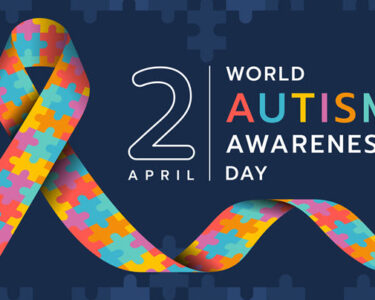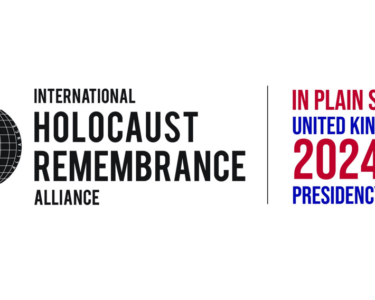Monday, 9 December 2019, marked the 71st anniversary of the adoption by the United Nations General Assembly of the Convention on the Prevention and Punishment of the Crime of Genocide.
As we formally recognise this anniversary, the Centre believes it provides an appropriate moment to consider the legacy of the Convention and its forefather, Raphael Lemkin, as well as the challenges and opportunities it presents us with in the present day. Professor Stuart Foster, our Executive Director commented thus:
“December 9 marks the 71st anniversary of the 1948 Convention on the Prevention and the Punishment of the Crime of Genocide. This important convention was established in the wake of the devastating events of the Holocaust. In the contemporary era – which has witnessed an alarming rise in antisemitism, Islamophobia, racism, bigotry and hatred – it is vital that we remember this dark episode in human history and continue to support teachers and schools to teach and talk about these issues, standing firm against prejudice, discrimination, ignorance and extremism.”
We are delighted therefore, as a Centre, to be able to recognise this anniversary by sharing the reflections of The Rt. Hon Lord Pickles, Special Envoy for Post-Holocaust Issues and co-chair of the United Kingdom Holocaust Memorial Foundation, and a guest blog piece by Carl Wilkens – the American who said ‘I’m Not Leaving’ in 1994, and showed great humanity, ingenuity and integrity, in the midst of the genocide of the Tutsi of Rwanda that claimed more than a million lives in just 100 terrible days.
In addition we would like to lend our support to our friends at the Ishami Foundation this #GenocidePreventionDay and would encourage readers to view their short film that seeks to raise awareness and engagement.
Let’s first turn to the term itself, the word ‘genocide’ was first coined by Lemkin in 1943. By this time, many of those who lost their lives in the events we now call “the Holocaust” had already died – with most shot into mass pits in Eastern Europe, gassed in specially constructed fixed-installation facilities in the Operation Reinhard death camps, or succumbed to disease or starvation in overpopulated, impoverished ghettos. Among these victims were members of Lemkin’s family, whom had remained in Poland after he had fled to Sweden in 1939. For Lemkin, then, the destruction of European Jewry was a very personal matter, and it was one he sought to classify and understand through his magnum opus, Axis Rule in Occupied Europe (1944). Yet in formulating the term genocide, Lemkin was not just concerned with the tragic fate of Europe’s Jews; rather, he was seeking to construct a conceptual framework for understanding the experience of other groups targeted by the Nazi regime (in particular, the Poles). Moreover, as his thinking developed, Lemkin also sought to position the policies of Nazism into a longer-term context that took due cognisance of mass atrocity throughout human history.
Although massively influenced by the Lemkin’s family Holocaust context, the term was not simply a matter of direct personal concern. As a young law student, Lemkin was shocked to read about the case of Soghomon Tehlirian – a young Armenian who had shot dead Mehmed Talaat (Said Ali Bey) and his wife in reprisal for a ruthless campaign committed against the Armenian people. He was disgusted and troubled to learn that Talaat had not faced justice and that instead Tehlirian had escaped arrest. Lemkin sought the advice of his law professor who stated starkly: ‘There was no law under which he [Talaat] could be arrested…Consider the case of a farmer who owns a flock of chickens, He kills them and this is his business. If you are interfering, you are trespassing’. Lemkin was saddened to respond, ‘But the Armenians are no chickens…’ but the Professor continues coolly, ‘You cannot interfere with the internal affairs of a nation without infringing on that nations sovereignty’.
To Lemkin, this did not make sense. ‘It is a crime for Tehlirian to kill a man, but it is not a crime for his oppressor to kill more than a million men. This is most inconsistent.’ The injustice of this situation, combined with his family and communities’ experiences twenty years later, led Lemkin to question why the killing of a million Armenians, or Jews or anyone else, a lesser crime than the murder of a single individual. He would devote his life to making such murder, annihilation, a crime – the resulting passage of the Genocide Convention was an enormously significant moment in the history of international relations. As much as obliging those who ratified or acceded to the treaty to prevent and punish genocide, the Convention provided a normative framework which has shaped our post-war world. Yet, for all its positives, upholding the Genocide Convention and enforcing its obligations has been challenging. In crude terms, the Convention has not stopped genocide from occurring, nor has it spurred countries into action when the first signs of genocidal activity have appeared. In fact, if anything, the reverse has often occurred. Faced with genocide, or with evidence that genocide is looming, the international community has often become pre-occupied with differing interpretations of the Convention or found ways of ignoring it altogether.
For young people who know and understand what genocide is and what it entails, this is peculiar, confusing, and nonsensical in equal measure. Yet our student research of 2016 also indicates that the majority of young people do not actually know what the word ‘genocide’ means. When asked to select the correct definition for the word, only 45.8% of all respondents did so correctly, and it was only among older students (16-18 year olds) that this climbed above 60%. Given the Holocaust has been a permanent fixture in the National Curriculum since 1991, and there is a long-standing tendency for the Holocaust to be presented as the exemplar or paradigmatic genocide, this raises pressing questions. Some of these relate to whether the extermination of Europe’s Jews is being accurately positioned with mankind’s long, dark history of violence and brutality. Others concern the conceptual frames erected around “the Holocaust” in classrooms and wider culture, and the extent to which these may actually detach the Holocaust from its root phenomenon: genocide. And others still touch on the reasons why we are choosing to teach, learn and remember certain historic instances of genocide but not others.
What does our research reveal about genocide and its teaching in our schools?
The Centre’s work focuses, self-evidently, upon developing research informed CPD programmes to support teachers in their teaching and learning about the Holocaust. Whilst we do not offer genocide prevention or wider support, we are acutely aware of the opportunities for teachers and schools to integrate or develop study of the phenomena of genocide, or post 1945 or contemporary examples of genocide in their curricula, whether within traditional subject areas or through whole school approaches like assemblies, tutor time or with bespoke days and enrichment opportunities.
Within that context, it was important to us to ask students in our 2016 national study about whether they had learned about genocide beyond the Holocaust. The following percentages of students had learned about each genocide or mass killing:
- Rwanda: 16.5%
- Bosnia: 10.4%
- Democratic Republic of Congo: 8.6%
- Cambodia: 6.0%
- Darfur: 5.9%
- Armenians: 5.4%
This information helped us understand the context of provision for and experience of Holocaust and genocide teaching and learning and led us in our most recent research with teachers to ask a question that would speak to something of this theme and issue.
Early analysis of survey responses from more than 1,000 teachers as part of the Centre’s latest research with teachers ‘Continuity and Change: 10 years of teaching about the Holocaust in English secondary schools’, suggests over a third currently teach about other genocides while three quarters believe other genocides deserve dedicated curriculum time.
If you teach about genocide in your school – do send us a #GenocideAwarenessDay tweet, with a line that reads ‘We include T&L about the Holocaust & #genocide in our school curriculum because…’ with an accompanying photo. We would love to hear from you via @UCL_Holocaust and to showcase your work and commitment to this cause via our social media. It all helps raise awareness and is a small step to making genocide history.
Concluding remarks and some examples of best practice:
Teaching and learning about genocide – be it the Holocaust, or those that came before or after it – is not an easy endeavour. Here at the Centre we work on daily basis helping to support those who wish to develop their practice and make their students’ encounters with this phenomena as meaningful and productive and possible. And, during the course of our work over the last decade, we have seen evidence of truly inspirational teaching and learning. Some of these examples are the product of imaginative and innovative teaching; others have been driven by young people themselves; all are testament to what can be achieved when there is both the will to explore these complex and complicated issues, and the means to do so.
On this Genocide Awareness Day, we are very pleased to share some of these examples with you here:



